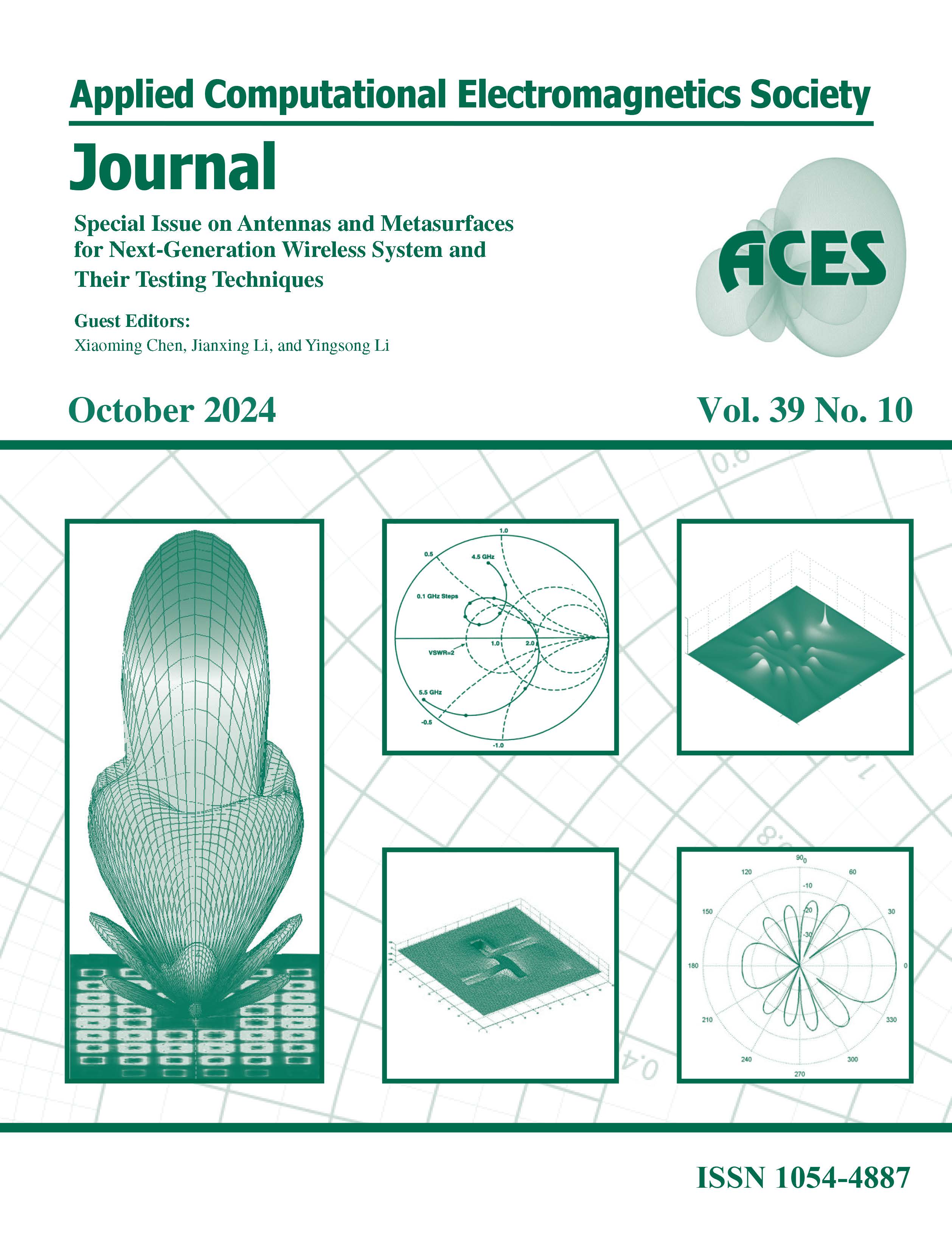Channel Measurement and Characterization for 5G Cellular Network with Passive Sounding Method at 2.6 GHz
DOI:
https://doi.org/10.13052/2024.ACES.J.391011Keywords:
5G cellular network, channel measurement, passive soundingAbstract
The fifth generation (5G) communication, which is capable of realizing wireless communication with a extremely low latency and high data rate, has been put into commercial use widely. The propagation channel is of great significance for design, performance evaluation, and improvement of 5G system. As to investigate the wireless channel of 5G network, a channel measurement system based on passive sounding method is proposed in this paper. By utilizing the 5G downlink signal, e.g., synchronization signal block (SSB) and channel state information reference signal (CSI-RS), the proposed system is able to extract the multipath parameters of 5G propagation environment. Moreover, a measurement campaign is conducted at an urban macro-cellular (uMa) environment with the passive sounding system. The measured results is briefly analysed and compared with the 3rd generation partnership project (3GPP) results.
Downloads
References
M. Agiwal, A. Roy, and N. Saxena, “Next generation 5G wireless networks: A comprehensive survey,” IEEE Communications Surveys and Tutorials, vol. 18, no. 3, pp. 1617-1655, Thirdquarter 2016.
C.-X. Wang, J. Bian, J. Sun, W. Zhang, and M. Zhang, “A survey of 5G channel measurements and models,” IEEE Communications Surveys and Tutorials, vol. 20, no. 4, pp. 3142-3168, Fourthquarter 2018.
C. U. Bas, R. Wang, S. Sangodoyin, S. Hur, K. Whang, J. Park, J. Zhang, and A. F. Molisch, “28 GHz propagation channel measurements for 5G microcellular environments,” The Applied Computational Electromagnetics Society Journal (ACES), vol. 34, no. 02, pp. 363-364, July 2021.
B. Fleury, M. Tschudin, R. Heddergott, D. Dahlhaus, and K. Ingeman Pedersen, “Channel parameter estimation in mobile radio environments using the SAGE algorithm,” IEEE Journal on Selected Areas in Communications, vol. 17, no. 3, pp. 434-450, Mar. 1999.
J. Huang, Y. Liu, C.-X. Wang, J. Sun, and H. Xiao, “5G millimeter wave channel sounders, measurements, and models: Recent developments and future challenges,” IEEE Communications Magazine, vol. 57, no. 1, pp. 138-145, Jan. 2019.
X. Cai, X. Yin, X. Cheng, and A. Pérez Yuste, ‘‘An empirical random-cluster model for subway channels based on passive measurements in UMTS,” IEEE Transactions on Communications, vol. 64, no. 8, pp. 3563-3575, Aug. 2016.
T. Zhou, C. Tao, S. Salous, L. Liu, and Z. Tan, “Implementation of an LTE-based channel measurement method for high-speed railway scenarios,” IEEE Transactions on Instrumentation and Measurement, vol. 65, no. 1, pp. 25-36, Jan.2016.
X. Cai, J. Rodríguez-Piñeiro, X. Yin, N. Wang, B. Ai, G. F. Pedersen, and A. P. Yuste, “An empirical air-to-ground channel model based on passive measurements in LTE,” IEEE Transactions on Vehicular Technology, vol. 68, no. 2, pp. 1140-1154, Feb. 2019.
T. Wu, X. Yin, L. Zhang, and J. Ning, “Measurement-based channel characterization for 5G downlink based on passive sounding in sub-6 GHz 5G commercial networks,” IEEE Transactions on Wireless Communications, vol. 20, no. 5, pp. 3225-3239, 2021.
H. Pei, X. Chen, X. Huang, X. Liu, X. Zhang, and Y. Huang, “Key issues and algorithms of multiple-input-multiple-output over-the-air testing in the multi-probe anechoic chamber setup,” Science China Information Sciences, vol. 65, no. 131302, Feb. 2022.
J. Yi, C. Dong, W. Xue, and X. Chen, “A switchable metamaterial absorber for fine- tuning of the coherence bandwidth in a reverberation chamber,” IEEE Transactions on Antennas and Propagation, vol. 70, no. 6, pp. 4908-4913, 2022.
NR; Physical Channels and Modulation, vol. 16.3.0, 3rd Generation Partnership Project (3GPP), Technical Speciation (TS) 38.211, Sep.2020.
M. Feder and E. Weinstein, “Parameter estimation of superimposed signals using the EM algorithm,” IEEE Transactions on Acoustics, Speech, and Signal Processing, vol. 36, no. 4, pp. 477-489, Apr. 1988.
S. Jiang, W. Wang, Y. Miao, W. Fan, and A. F. Molisch, “A survey of dense multipath and Its impact on wireless systems,” IEEE Open Journal of Antennas and Propagation, vol. 3, pp. 435-460, 2022.
J. Zhang, D. Dong, Y. Liang, X. Nie, X. Gao, Y. Zhang, C. Huang, and G. Liu, ‘‘Propagation characteristics of wideband MIMO channel in urban micro-and macrocells,” pp. 1-6, 2008.
Study on channel model for frequencies from 0.5 to 100 GHz, vol. 14.2.0, 3rd Generation Partnership Project (3GPP), Technical Report (TR) 38.901, Sep. 2017.




